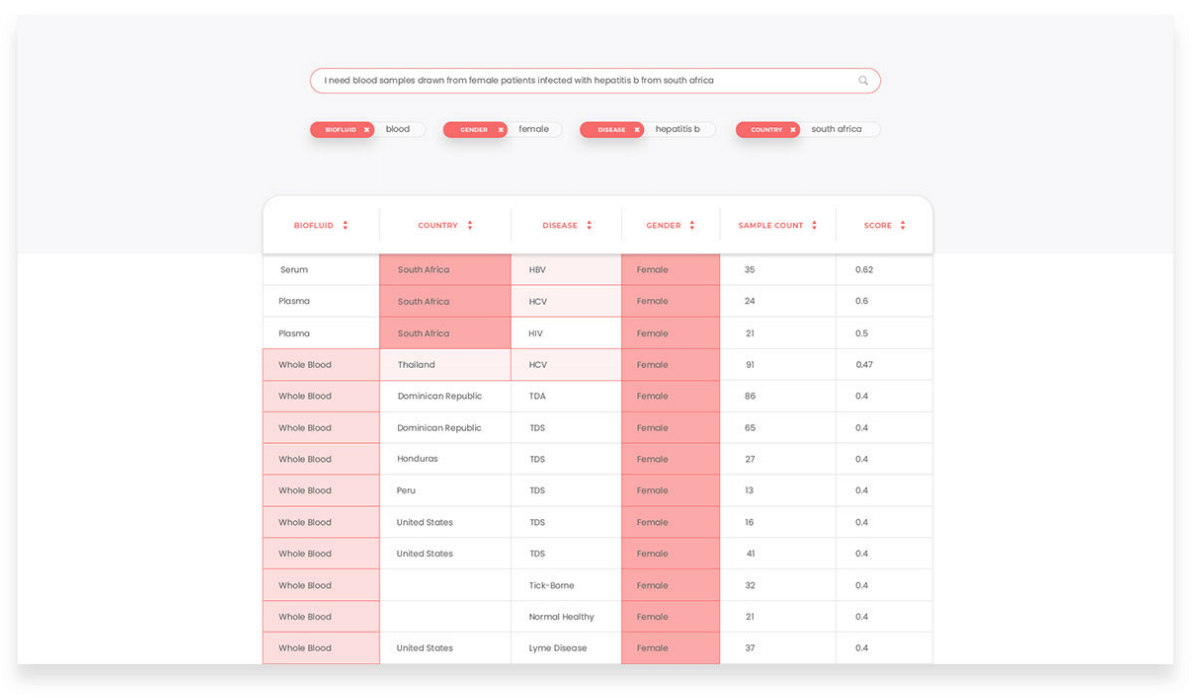
We live in a world of data, which is fantastic and challenging at the same time. The upside of having vast volumes of information at our disposal is that we can gain profound knowledge of certain things and make better data-driven decisions. However, the downside is that it becomes difficult to access the required information as the data pool is constantly increasing.
Therefore, looking for appropriate records in a vast database is like looking for a needle in a haystack.
Fortunately, there are semantic search engines that can facilitate this task. The technology can process big data quickly and efficiently fetching the records we need processing search queries made in natural language.
Since many companies deal with enormous volumes of data every day, semantic search engines technology is vital to maintain an effective workflow and do research as quickly as possible. With an ever-growing amount of information, such a solution will soon be a go-to solution for every business. But what’s so special about it?
Below you will find a case study on how we created a semantic engine for the company focused on the development of in-vitro diagnostic (IVD) and biopharmaceutical products. It is an excellent example of how this technology can be used in real life.
CHECK OUT OUR CASE STUDY:
Title: Semantic Search Engine for Bioinformatics Company
Azati designed and developed a semantic search engine powered by machine learning. It extracts the actual meaning from the search query and looks for the most relevant results across huge scientific datasets.
WHAT IS SEMANTIC SEARCH?
First of all, let’s define what is semantics – it’s basically detecting the meaning of words. To explain in detail, the semantic search engine processes the entered search query, understands not just the direct sense but possible interpretations as well, creates associations, and only then searches for relevant entries in the database.
Since the program always tries to find a content-wise synonym to complete the task, the results are much more accurate and meaningful. Of course, such search engines are more sophisticated. Unlike more straightforward programs that fetch only the results containing exact keywords, the semantic search technology ‘thinks’ like a real person and detects entries that might be relevant even though they don’t include the initial keyword.
HOW IS A SEMANTIC SEARCH ENGINE DIFFERENT FROM A REGULAR SEARCH ENGINE?
Traditional search engines use the following algorithm – the user enters a keyword, and the system returns the results that contain it. For instance, you enter “big mirror” in the search field, and the engine fetches all the files with this phrase in the text. This approach is effective when the dataset consists of well-organized and ‘cleansed’ information. Thus, to find the records in no time someone will first need to process all the entries and make sure that the information is registered in a correct and appropriate form.
But when it comes to big data, we need a more sophisticated tool that could work with unstructured information because it’s virtually impossible for a human to go through all the records and organize them. The keyword search technology will simply not succeed in processing complex databases because it will look for the exact keywords only. A semantic search engine, on the other hand, will try to understand your request and actually meet it by analyzing context and looking for synonyms. Therefore, users will get more accurate results than in the case with a traditional search.
LET’S TAKE A LOOK AT GOOGLE SEMANTIC SEARCH ENGINE
Google Search is a great example of this technology. While it returns the results that contain the keyword itself, it also looks for information that doesn’t contain the exact keyphrase but still might be helpful. That’s why you will always get the relevant SERPs – search engine result pages. Also, there are advanced features like predictive search that recognizes the keywords while the user is typing the request and offers possible variations of it.
What’s more, the Google image matching search is based on semantics too – the system analyzes the image and tries to not only understand what is pictured, but also find similar images. It is an application of semantic search technology. Google tries to understand the meaning of the user’s query and satisfy it in the most accurate way.
HOW TO BUILD A SEMANTIC SEARCH ENGINE?
Semantic search results are based on ontologies and machine learning. The system looks for relations between terms and finds deductive similarities. For example, the words “profit” and “finances” are related. But also the word “profit” is a term. Thus, during the process of semantic matching, the system will deduce that “profit” must be a financial term.
To create a system with semantic ‘thinking’ developers use machine learning. They provide the program with a significant amount of data to study the semantic search machine learning models. Then, the system looks for programmed relations and learns how to find the needed synonyms to further provide users with valid results. The most significant advantage of semantic engines is that they will always return a relevant SERP. Even if there are no entries that are a 100% match to the query, the system will still fetch the records that are related to the semantic keywords.
Basically, the primary technology that powers a semantic search engine structures the raw data using different ontology techniques.
Unfortunately, it is now impossible to create a perfect ontology instantly. The good news is that it can be improved over time. But even though this process is time-consuming and demands a lot of resources, the results are inspiring.
Semantic analysis software can process and understand not just keywords themselves, but specific linguistic nuances. In other words, this system works pretty much like a human. Moreover, many tools can simplify the development of the system.

WHAT TOOLS CAN YOU USE TO BUILD A SEMANTIC SEARCH ENGINE?
There are many tools you can use to build an ontology-based search engine – the Internet is full of different libraries to train the system. Just go to GitHub, and the chances are that there will be plenty of the required data. Also, you can easily find tools to gather the initial data if there is no library or database for training. For example, you can use the Akka framework to build a web crawler that will scrape the required content.
Once the data is gathered, it needs to be processed so that it can be used for machine training. Therefore, it needs to be parsed into pairs.
A great tool that might be handy here is AST in Python’s library. It extracts the code leaving the comments. Then the cleaned data should be organized into three sets: train, validation, and test. It is worth mentioning that you should also keep the initial data just in case.
To train the ontology-based semantic search engine, we need to create the ontology itself that will come in the form of OWL files. They consist of concepts created with Resource Description Framework. RDF stores the information in triples – the data entity. It is a set of three components that describe the statement. For example, “The dog has fluffy ears” is a data entity. It consists of three components: “The dog” is a subject, “Has” is a predicate, and “Fluffy ears” is an object.
These triples create concepts for an ontology. To create one, data scientists can use various tools like Protege to accelerate the process. Afterward, we use this structured data to train the system. However, there are many pre-trained models available, and they are rather convenient to use. They save a lot of time and effort providing developers with a ready-to-use basis for the future semantic search technology. But in the case of domain-specific projects, it is better to train a custom model.
SUMMARY
Machine learning and artificial intelligence are becoming a massive part of our lives. And it’s better to start using these technologies now not only to facilitate working with data and simplify the research but to feel more confident in this fast-evolving world.
Many industries can take advantage of the semantic search engines technology – from biotech and pharmaceuticals to e-commerce. Some companies make use of semantic search engines to improve the performance of the team at the stage of research and development. While others implement the technology to search for buyers, especially if the online company has a huge database of goods it sells.
Although this technology is fresh, it is still possible to build a near perfect AI-powered semantic search system even for the most complex data domains. And since technologies advance at a fast pace, we can expect such engines to progress rapidly.

